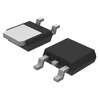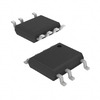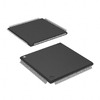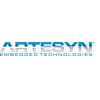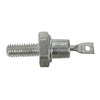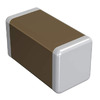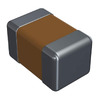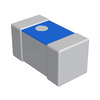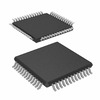How the L298N Motor Driver Powers DC and Stepper Motors
Discover how the L298N motor driver lets you control speed and direction for motors in your projects, making it ideal for robotics and automation. This article covers its features, applications, and answers common questions to help you get started.Catalog
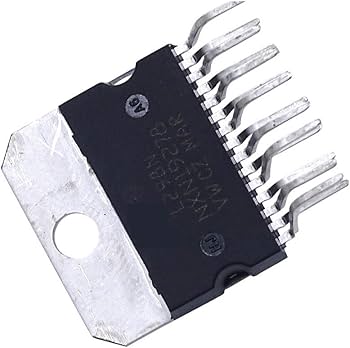
Overview of the L298N Motor Driver
The L298N motor driver is designed for efficiently controlling the speed and direction of DC and stepper motors, especially in projects needing robust power management. This dual full-bridge driver handles high-current and high-voltage applications, ideal for motors, relays, and solenoids. Accepting standard TTL logic levels, it integrates smoothly with control circuits. The L298N includes dual enable inputs, allowing each motor to be independently enabled or disabled without modifying main inputs. An additional supply input lets you run the logic side at a lower voltage than the motor supply, enhancing compatibility with various logic levels.
L298N Pin Configuration
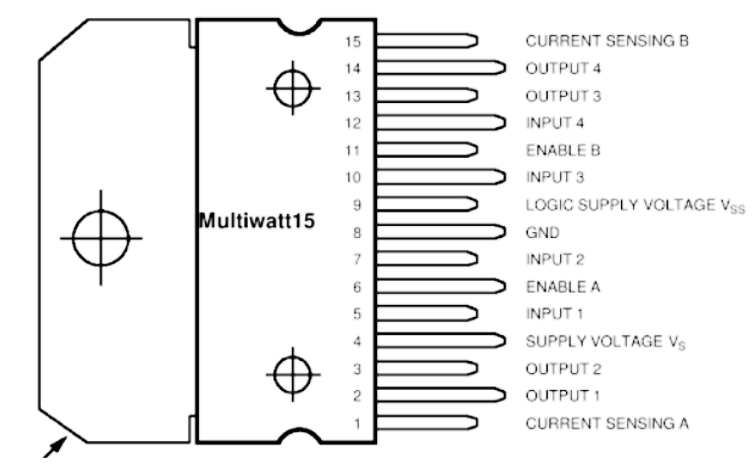
| Pin | Name | Function |
| 1; 15 | Sense A; Sense B | Between this pin and ground is connected the sense resistor to control the current of the load. |
| 2; 3 | Out 1; Out 2 | Outputs of the Bridge A; the current that flows through the load connected between these two pins is monitored at pin 1. |
| 4 | Vs | Supply Voltage for the Power Output Stages. A non-inductive 100nF capacitor must be connected between this pin and ground. |
| 5; 7 | Input 1; Input 2 | TTL Compatible Inputs of the Bridge A. |
| 6; 11 | Enable A; Enable B | TTL Compatible Enable Input: the L state disables the bridge A (enable A) and/or the bridge B (enable B). |
| 8 | GND | Ground. |
| 9 | VSS | Supply Voltage for the Logic Blocks. A 100nF capacitor must be connected between this pin and ground. |
| 10; 12 | Input 3; Input 4 | TTL Compatible Inputs of the Bridge B. |
| 13; 14 | Out 3; Out 4 | Outputs of the Bridge B; the current that flows through the load connected between these two pins is monitored at pin 15. |
| - | N.C. | Not Connected |
L298N CAD Model Details
Symbol of the L298N Motor Driver
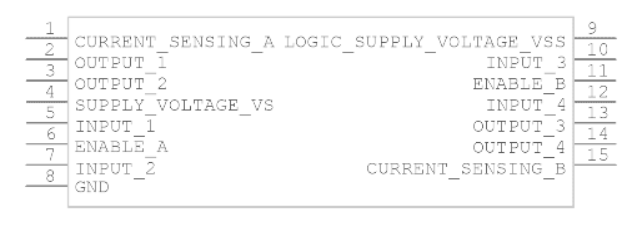
Footprint for L298N Motor Driver
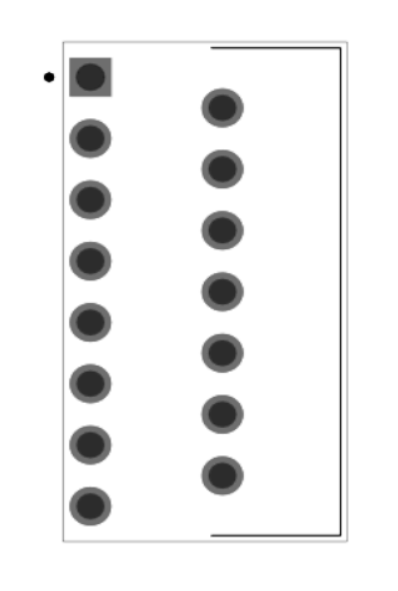
3D Model of the L298N Driver

Key Features of the L298N Driver
Operating Voltage Range
The L298N driver supports an operating voltage of up to 46V, making it suitable for applications that require higher voltages. This allows you to drive a wide range of motors, particularly useful when working with high-power DC and stepper motors that need stable voltage control.
High Current Capacity
With a total direct current capacity of up to 4A, the L298N is designed to handle demanding loads. This feature is useful in applications that involve larger motors or multiple smaller motors, ensuring smooth operation without risk of overheating.
Low Saturation Voltage
The driver offers low saturation voltage, which means it minimizes energy loss and allows for efficient power usage. This feature helps maintain consistent motor performance, which can be particularly helpful in applications where precision and energy conservation are priorities.
Overtemperature Protection
The L298N includes a built-in overtemperature protection feature, providing automatic shutdown in case of overheating. This feature helps extend the life of the driver and connected components, adding an extra layer of safety to your motor-driven projects.
High Noise Immunity
The L298N is built to handle logical "0" input voltages up to 1.5V, giving it high immunity to electrical noise. This ensures the driver continues to operate reliably, even in electrically noisy environments, which is especially useful in industrial settings or projects involving multiple electronic components.
L298N Motor Driver Technical Specifications
Technical specifications, attributes, parameters, and comparable parts for the STMicroelectronics L298N
| Type | Parameter |
| Lifecycle Status | ACTIVE (Last Updated: 6 months ago) |
| Factory Lead Time | 10 Weeks |
| Mount | Through Hole |
| Mounting Type | Through Hole |
| Package / Case | Multiwatt-15 (Vertical, Bent and Staggered Leads) |
| Number of Pins | 15 |
| Operating Temperature | -40°C ~ 150°C TJ |
| Packaging | Tube |
| JESD-609 Code | e3 |
| Part Status | Active |
| Moisture Sensitivity Level (MSL) | 1 (Unlimited) |
| Number of Terminations | 15 |
| ECCN Code | EAR99 |
| Terminal Finish | Matte Tin (Sn) |
| Applications | DC Motors, Relays, Solenoids, Stepper Motors |
| Voltage - Supply | 4.5V ~ 7V |
| Terminal Position | Zig-Zag |
| Number of Functions | 2 |
| Supply Voltage | 5V |
| Base Part Number | L298 |
| Pin Count | 15 |
| Number of Outputs | 4 |
| Output Voltage | 46V |
| Max Output Current | 3A |
| Operating Supply Voltage | 42V |
| Number of Channels | 2 |
| Interface | Logic |
| Operating Supply Current | 13mA |
| Output Configuration | Half Bridge (4) |
| Output Current | 2A |
| Quiescent Current | 500mA |
| Output Characteristics | Totem-Pole |
| Output Current per Channel | 2A |
| Collector Emitter Voltage (VCEO) | 46V |
| Max Collector Current | 3A |
| Output Polarity | TRUE |
| Input Characteristics | Standard |
| Voltage - Load | 4.8V ~ 46V |
| Fault Protection | Current Limiting, Over Temperature |
| Supply Voltage1-Nom | 42V |
| Min Supply Voltage (DC) | 4.8V |
| Built-in Protections | Over Current |
| Motor Type | Brushed |
| Load Type | Inductive |
| Height | 10.7mm |
| Length | 19.6mm |
| Width | 20mm |
| REACH SVHC | No SVHC |
| Radiation Hardening | No |
| RoHS Status | ROHS3 Compliant |
| Lead Free | Lead Free |
Parts Comparable to the L298N Driver
| Part Number | L298N | MAX232DW | TJA1048T,118 | MAX202CDR | MAX232ECN |
| Manufacturer | STMicroelectronics | Texas Instruments | NXP USA Inc. | Texas Instruments | Texas Instruments |
| Package / Case | Multiwatt-15 (Vertical, Bent and Staggered Leads) | 16-SOIC (0.154, 3.90mm Width) | 14-SOIC (0.154, 3.90mm Width) | 16-SOIC (0.295, 7.50mm Width) | 16-DIP (0.300, 7.62mm Width) |
| Number of Pins | 15 | 16 | 16 | 16 | 16 |
| Output Voltage | 46 V | - | - | 7 V | - |
| Interface | Logic | - | - | - | - |
| Min Supply Voltage | 4.8 V | 5 V | 5 V | 5 V | 5 V |
| Supply Voltage | 5 V | 5 V | 5 V | 5 V | 5 V |
| Supply Voltage1-Nom | 42 V | 5 V | 5 V | 5 V | 5 V |
| RoHS Status | ROHS3 Compliant | ROHS3 Compliant | ROHS3 Compliant | ROHS3 Compliant | ROHS3 Compliant |
Block Diagram of the L298N Motor Driver

L298N Driver Alternatives and Substitute Parts
| Part Number | Description | Manufacturer |
| L298KV | 2A 2 Channel, Full Bridge Based Peripheral Driver, PZFM15 | Texas Instruments |
| L298HN | Dual Full Bridge Driver | STMicroelectronics |
Applications and Use Cases for the L298N Motor Driver
Driving DC Motors
The L298N is often used to control DC motors, allowing you to adjust both speed and direction. This makes it suitable for applications where you need precise motor control, like in automated systems, small vehicle models, and hobbyist robotics.
Controlling Stepper Motors
With its dual H-Bridge configuration, the L298N is effective in driving stepper motors. This capability is valuable in applications that require accurate motor steps, such as 3D printers, CNC machines, and other equipment where precise positioning is essential.
Robotics Projects
The L298N driver’s versatility and reliability make it a popular choice in robotics. It lets you control multiple motors smoothly, making it ideal for robots that need complex movements, from simple obstacle-avoiding models to more advanced robotic arms and vehicles.
Operating Inductive Loads
Beyond motors, the L298N can also drive other inductive loads, like relays and solenoids. This application extends its usefulness to projects that involve electromagnetic control, like automated switches, locking mechanisms, and actuator-based systems.
L298N Motor Driver Outline and Dimensions
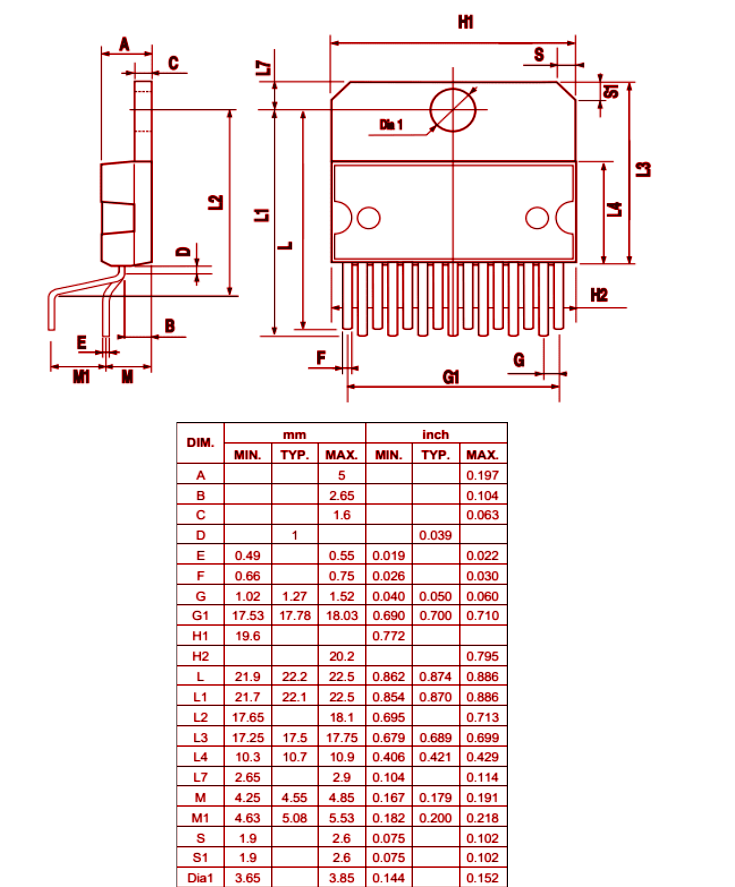
Manufacturer Information for the L298N Driver
The L298N is manufactured by STMicroelectronics, a well-established provider of reliable semiconductor solutions across diverse electronic applications. Known for combining design expertise with manufacturing strength, STMicroelectronics produces adaptable components for modern electronic needs. Their development approach ensures products like the L298N fit seamlessly into varied applications, supporting effective and reliable motor control.
Datasheet PDF
L298HN Datasheet:
Frequently Asked Questions [FAQ]
1. What Does the L298N Motor Driver Do?
The L298N is a dual H-Bridge motor driver that lets you control both the speed and direction of two DC motors at once. When your motor’s supply voltage is up to 12V, you can enable the 5V regulator on the driver. This allows the 5V pin to be used as an output, which can power devices like an Arduino board.
2. How is the L298 Different from the L298N?
The L298N is part of the L298 family of motor drivers, each with a unique current-handling capacity. The L298N specifically supports up to 3 amperes at 35 volts DC, making it a solid choice for powering most hobby motors.
3. How Do You Control Motor Speed with the L298N?
To control speed, you can send signals to the enable pin for each motor. Sending a HIGH signal to enable pin 1, for example, will make motor A run at full speed, while sending a LOW signal will turn it off. If you use a PWM signal, you can adjust the speed, as it will vary based on the duty cycle of the PWM.
4. How Does the L293D Compare to the L298N?
The L293D and L298N drivers have different structures for motor control. The L293D is a quadruple motor driver that uses a half-H bridge, allowing independent control of all four input-output lines. The L298N, on the other hand, uses a dual full-H bridge, meaning you must use the full bridge and cannot operate half of it independently.
5. What is an H-Bridge Circuit in Motor Drivers?
An H-Bridge is a circuit that allows voltage to be applied across a motor in both directions. This makes it possible to run DC motors forward and backward, which is a helpful feature in robotics and other applications where you need directional control.
About us
ALLELCO LIMITED
Read more
Quick inquiry
Please send an inquiry, we will respond immediately.

TMP36 Sensor: Specifications, Applications, and Features
on October 29th
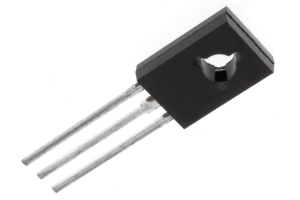
Comprehensive Guide to MJE350 Transistor Usage
on October 29th
Popular Posts
-

What is GND in the circuit?
on January 1th 2933
-

RJ-45 Connector Guide: RJ-45 Connector Color Codes, Wiring Schemes, R-J45 Applications, RJ-45 Datasheets
on January 1th 2485
-

Fiber Connector Types: SC Vs LC And LC Vs MTP
on January 1th 2077
-

Understanding Power Supply Voltages in Electronics VCC, VDD, VEE, VSS, and GND
on November 8th 1871
-

Comparison Between DB9 and RS232
on January 1th 1758
-

What Is An LR44 Battery?
Electricity, that ubiquitous force, quietly permeates every aspect of our daily lives, from trivial gadgets to life-threatening medical equipment, it plays a silent role. However, truly grasping this energy, especially how to store and efficiently output it, is no easy task. It is against this background that this article will focus on a type of coin cell battery that may seem insignificant on the...on January 1th 1707
-

Understanding the Fundamentals:Inductance Resistance, andCapacitance
In the intricate dance of electrical engineering, a trio of fundamental elements takes center stage: inductance, resistance, and capacitance. Each bears unique traits that dictate the dynamic rhythms of electronic circuits. Here, we embark on a journey to decipher the complexities of these components, to uncover their distinct roles and practical uses within the vast electrical orchestra. Inductan...on January 1th 1649
-

CR2430 Battery Comprehensive Guide: Specifications, Applications and Comparison to CR2032 Batteries
What is CR2430 battery ?Benefits of CR2430 BatteriesNormCR2430 Battery ApplicationsCR2430 EquivalentCR2430 VS CR2032Battery CR2430 SizeWhat to look for when buying the CR2430 and equivalentsData Sheet PDFFrequently Asked Questions Batteries are the heart of small electronic devices. Among the many types available, coin cells play a crucial role, commonly found in calculators, remote controls, and ...on January 1th 1536
-

What Is RF and Why Do We Use It?
Radio Frequency (RF) technology is a key part of modern wireless communication, enabling data transmission over long distances without physical connections. This article delves into the basics of RF, explaining how electromagnetic radiation (EMR) makes RF communication possible. We will explore the principles of EMR, the creation and control of RF signals, and their wide-ranging uses. The article ...on January 1th 1530
-

CR2450 vs CR2032: Can The Battery Be Used Instead?
Lithium manganese batteries do have some similarities with other lithium batteries. High energy density and long service life are the characteristics they have in common. This kind of battery has won the trust and favor of many consumers because of its unique safety. Expensive tech gadgets? Small appliances in our homes? Look around and you'll see them everywhere. Among these many lithium-manganes...on January 1th 1500

